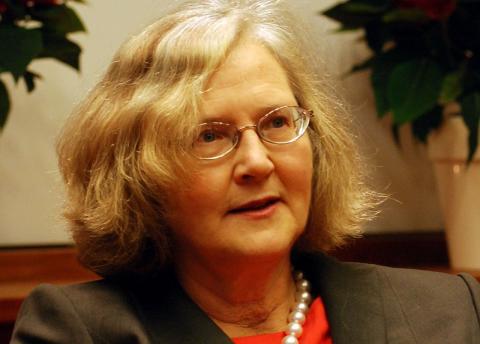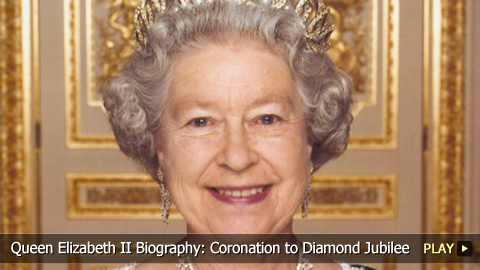Top 10 Female Scientists

Our lives are better because of them. Join MsMojo as we count down our picks for the Top 10 women scientists.
For this list, we're looking at women who've made significant strides in scientific advancement. From geneticists to physicists to environmentalists, all types of scientific study are represented by the females whose research has benefited humanity here —which means they must be scientists by trade. Those talented women who were mathematicians, philosophers, or engineers are not included.
Special thanks to our users Adriana Cardona and Melvin Anindo for submitting this idea on our interactive suggestion tool at http://www.MsMojo.tv
#10: Elizabeth Blackburn
Queen Elizabeth II Biography: Coronation to Diamond Jubilee
After earning degrees in Australia and England, Elizabeth Blackburn immigrated to America, eventually joining the molecular biology department at the University of California, Berkeley. While there, Blackburn and her colleagues discovered the enzyme telomerase, which solved the issue of how chromosomes can be copied repeatedly without degrading. The telomerase programs the telomeres at the ends of the chromosome to shorten after replication, thus protecting its structure and genetic information. This discovery has potential applications in areas such as understanding the molecular process of death, curing cancer and reducing aging. For her findings, Blackburn was awarded the 2009 Nobel Prize in Physiology or Medicine.
#9: Rachel Carson
10 Rachel Dolezal Scandal Facts - WMNews Ep. 32
It’s rare for a single environmentalist to make an impact in our industrial world, but Rachel Carson did just that. An American biologist and author, Carson was especially notable for writing a book entitled “Silent Spring,” which helped educate the greater populace on the dangers of pesticides. To quell the storm caused by its alarmed citizens, the U.S. government was forced to take action. Nationwide bans on harmful pesticides were implemented—most notably DDT— due to Carson’s exposes. Who knows how many lives were saved—human and otherwise—as a result of Carson’s efforts? She was awarded the Presidential Medal of Freedom in 1980, 16 years after her death.
#8: Barbara McClintock
Barbara McClintock accomplished more with corn than most of us accomplish in our lifetime. The American scientist spent most of her professional life studying maize genetics, which culminated in the discovery of jumping genes. These genes can “jump” to various stages of cell development, thus proving that genes aren’t always stationary and don’t always adhere to a prearranged sequence. The existence of jumping genes is important in understanding inheritance and evolution. McClintock’s discovery was not accepted until the rest of genetics caught up with her findings, but she was justly awarded the Nobel Prize in Medicine in 1983.
#7: Dorothy Hodgkin
Dorothy Hodgkin developed the way we can now view the structures of infinitesimal molecules. The Egypt-born biochemist mastered the method of X-Ray crystallography, which helped us discover the structures of compounds whose molecular makeup was only guessed at up to that point. Hodgkin was single-handedly responsible for confirming the structures of penicillin, insulin, and vitamin B12, as well as popularizing the X-ray technique that is used to this day. For her highly important work, Hodgkin won the Nobel Prize in Chemistry in 1964.
#6: Rita Levi-Montalcini
In 1986, this Italian neurologist earned the Nobel Prize in Physiology or Medicine for co-discovering the growth factors of certain neurons, which are pseudo-proteins that regulate cellular growth. As the first of its kind to be discovered, the nerve growth factor was isolated by Levi-Montalcini in 1952. However, just like with Barbara McClintock, the significance of her discovery was not made clear until decades later. Because of her findings, science has a broader knowledge of how neurodegenerative diseases are caused and, conversely, how they can be stopped.
#5: Chien-Shiung Wu
Known respectfully as the “Chinese Madame Curie,” Wu’s contributions to science are varied and abundant. After immigrating to America, she joined the Manhattan Project, where her work helped create the first nuclear weapons. Her most significant contribution to the project was the separation of uranium into two isotopes that can better conduct fission reactions. Wu is also famous for disproving the law of conservation of parity, which found that mirroring particles aren’t always symmetrical. For this discovery, Wu’s colleagues who conducted the experiments won the Nobel Prize in Physics, while she remained curiously unrecognized.
#4: Gertrude B. Elion
Born in New York City in 1918, Gertrude B. Elion was a biochemist and pharmacologist whose work in drug research was prolific. After bouncing around various medical organizations, Elion landed at Burroughs Wellcome pharmaceutical company and headed the experimental therapy division. It was there that she did her best work. Elion helped develop Purinethol and AZT, the first successful drugs for leukemia and AIDS, respectively. She also developed treatments for other ailments, such as meningitis and malaria. She was awarded the 1988 Nobel Prize in Physiology or Medicine for her life-saving treatments.
#3: Lise Meitner
The Austrian physicist Lise Meitner was part of a small research team that discovered nuclear fission by noting the energy released by splitting uranium atoms. This led to the invention of nuclear power by way of nuclear reactors, which generate a large percentage of the world’s electricity. Nuclear fission is also how high-level explosives like atomic bombs work. Unfortunately, like many women in those days, Meitner’s exploits were overshadowed by those of her male counterparts, and she was snubbed when the Nobel Prize in Physics was presented to colleague Otto Hahn.
#2: Rosalind Franklin
Most people know that Watson and Crick discovered the structure of DNA, but most people don’t know that Rosalind Franklin laid the groundwork for their discovery. Franklin’s groundbreaking research on the structures of various viruses, proteins, and acids by using X-Ray diffraction imaging resulted in the discovery of the DNA double helix. Unfairly, Watson and Crick would win the Nobel Prize but Franklin was not even mentioned. It wasn’t until long after her death that people took notice of her integral role in the discovery, as it was her photo of DNA that produced the very idea of the helix. Before we unveil our top pick, here are a few honorable mentions: - Jane Goodall - Maria Mitchell - Stephanie Kwolek - Jocelyn Bell Burnell - Temple Grandin - Mary Anning
#1: Marie Curie
It couldn’t have been anyone else. Marie Curie, discoverer of radium, pioneered the study of radioactivity, identified its wide range of uses and effects, and popularized the knowledge of radiation. Additionally, Curie and her husband discovered the element polonium and expounded on the research of x-rays. Curie was the first woman to win the Nobel Prize, the first person and only woman to win twice, and the only person to win for separate science categories. Her daughter Irene would continue in the family’s footsteps, as she earned the Nobel Prize in Chemistry in 1935 for the discovery of artificial radioactivity.



